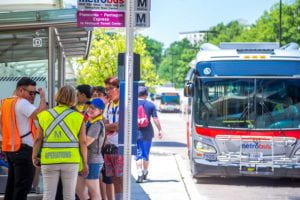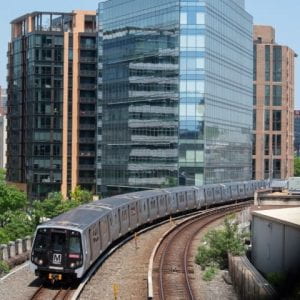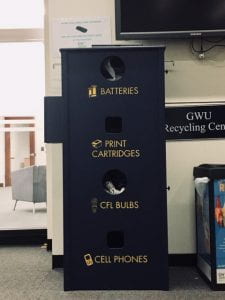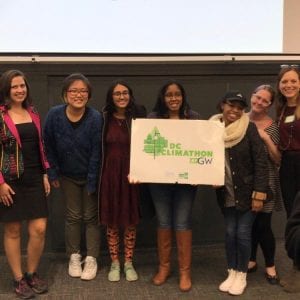A message from Meghan Chapple, Office of Sustainability Director and Co-Director of Sustainable GW:
I hope you are staying safe, and finding some form of peace and wellness in the midst of the COVID-19 pandemic.
We are having a first-hand experience of global change. In the chaos we find confusion and anxiety. We can also find a learning moment to observe, reflect, and come to a deeper understanding. How will the pandemic experience affect the way society sees the world, and the sustainability of our Earth systems to support human life? What can we learn from this to create a world that embodies the Sustainable Development Goals?
Thus far, I have found that the pandemic reminds us of several key sustainability truths:
1) We are all human, and we are all in this together.
We depend on our planet, and the local and global web of one another for goods, services, and social support. Starting today, let us acknowledge and show respect for these interconnections with one another and the Earth.
2) We need to continue to create structures for equality across societal boundaries. While every human is susceptible to the novel coronavirus, unless we take immediate and creative action, the poor and disenfranchised will experience a more negative impact. Let this situation inspire us each to bring forward courage and creativity to support our fellow humans through our individual actions and our societal structures.
3) Trust, transparency, and connection enable us to work together across boundaries more effectively. We have seen the disastrous effects of denial of scientific evidence and eroded international and domestic State relationships. With trust, transparency, and connection we can leverage one another’s strengths and resources for the greater good of all.
4) We need to plan for what we can’t see. The COVID-19 pandemic demonstrates the limits of the old adage “see it to believe it”. Our ability to prepare for global change – sudden like COVID-19 or gradual like climate change – is only limited by our willingness to imagine such scenarios, our courage to envision the world we want to see, and our ability to believe we can create it together. We need to turn the adage around and “believe it to see it”.
Let’s explore these three abilities.
- Can you imagine the scenario: a global pandemic in the midst of a natural disaster (flooding, hurricane, forest fires, extreme heat, drought, etc.)?
- Can you envision a world we want to see: where we acknowledge scientific evidence to prevent the worst impacts of disease and climate change?
- Can you believe in our collective ability: that we can act as an interconnected society that uses scientific evidence to plan and coordinate ingenuity and resources to address the problem, whether in the health care system or the global ecosystems?
I hope you will join me in using this time of crisis to learn, and to exercise these three abilities. Such practice is going to come in handy in the coming years to prepare for further global change.
Follow this blog in the coming weeks for a deeper exploration into imagining possible scenarios, envisioning the world we want to see, and believing in our collective ability to create a sustainable future.






